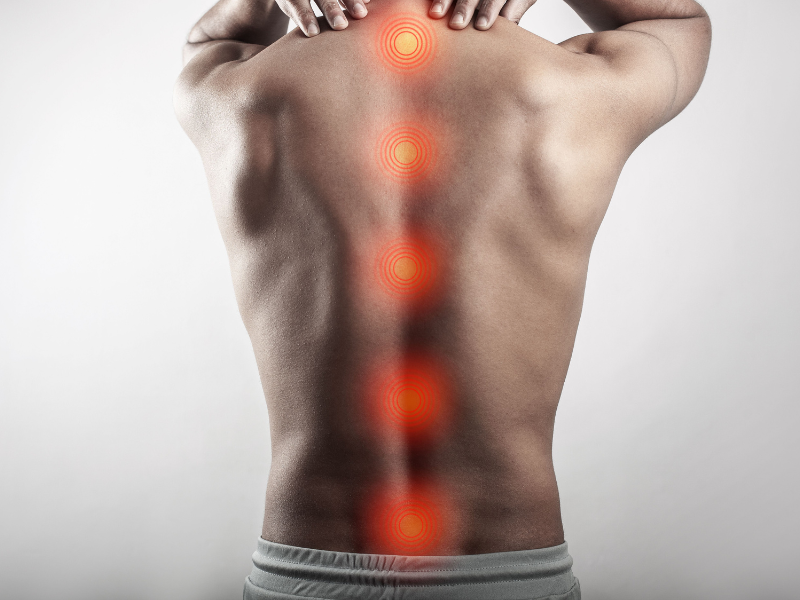Spinal Stroke: Causes, Symptoms, and Treatment

Spinal stroke, a relatively rare condition, occurs when the blood supply to the spinal cord is disrupted, leading to potential damage and impairment.
This condition can cause significant pain and loss of function. Thus, affecting an individual’s ability to move and control their limbs.
What Causes Spinal Stroke?
You’re more likely to have a spinal stroke if:
· Arterial blockage: Spinal strokes are often caused by the same factors that lead to strokes in the brain, such as blood clots or plaque buildup in the arteries. When a blockage occurs in the arteries that supply blood to the spinal cord, it can result in a spinal stroke.
· Atherosclerosis: The buildup of fatty deposits and plaque in the blood vessels can restrict blood flow to the spinal cord. This increases the risk of a stroke.
· Vasculitis: Vasculitis is an inflammation of blood vessels. It can damage arteries and disrupt blood flow to the spinal cord, possibly causing a spinal stroke.
· Trauma: Severe trauma, such as a car accident or a fall, can injure the blood vessels. This can disrupt the blood flow to the spinal cord, causing a spinal stroke.
What are the Symptoms of Spinal Stroke?
The symptoms of a spinal stroke might differ from person to person, depending on where the stroke occurs in the spine. Recognizing the symptoms of spinal stroke is vital for early detection and treatment. Symptoms of Spinal Stroke may include:
· Sudden, severe back pain- One of the most common symptoms of spinal stroke is an abrupt onset of intense back pain. The pain may be localized or spread to the arms, legs, or abdomen, depending on the location of the affected area.
· Loss of motor function- Spinal stroke can cause muscle weakness or paralysis in the limbs. This makes it challenging for those with this condition to move or control them.
· Sensory disturbances- Patients may experience numbness or tingling in the affected areas, as well as a loss of sensation to touch, temperature, or pain.
· Bowel and bladder dysfunction- Spinal stroke can disrupt the normal functioning of the bowel and bladder, leading to urinary or fecal incontinence.
· Sexual dysfunction- In some cases, spinal stroke can cause erectile dysfunction in men and affect sexual function in both men and women.
How is Spinal Stroke Diagnosed?
Diagnosing spinal stroke requires a thorough evaluation of the patient’s medical history, symptoms, and physical examination. Key diagnostic procedures include:
1. Imaging Studies: Magnetic Resonance Imaging (MRI) and Computed Tomography (CT) scans. They can provide detailed images of the spinal cord, helping to identify the location and extent of the damage.
2. Angiography: This procedure involves injecting a contrast dye into blood vessels to visualize any abnormalities or blockages that might be causing reduced blood flow to the spinal cord.
3. Electromyography (EMG): EMG assesses the electrical activity of muscles and nerves, helping to pinpoint the areas affected by the spinal stroke.
What are the Treatment Options for Spinal Stroke?
Early intervention and prompt treatment are essential to improve outcomes for patients with spinal stroke. Treatment options depend on the severity of the condition and may include:
1. Medications: Doctors may prescribe anticoagulants or antiplatelet medications to prevent further blood clot formation and manage underlying conditions like atherosclerosis.
2. Physical Therapy: Rehabilitation and physical therapy play a crucial role in restoring muscle strength, and coordination. It also helps in mobility after a spinal stroke.
3. Pain Management: Pain medications and interventions, such as nerve blocks, can help alleviate the intense back pain associated with spinal stroke.
4. Surgery: In certain cases, surgery may be necessary to relieve pressure on the spinal cord or repair damaged blood vessels.
5. Assistive Devices: Using assistive devices like braces, canes, or wheelchairs can aid in improving mobility and enhancing the patient’s quality of life.



